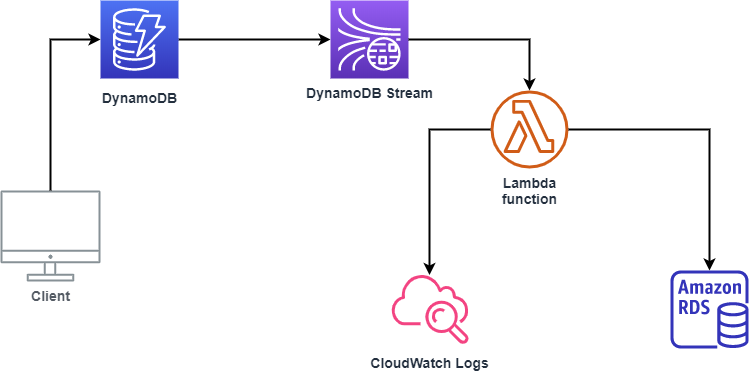
- #Local dynamodb windows how to#
- #Local dynamodb windows install#
- #Local dynamodb windows update#
- #Local dynamodb windows windows 10#
- #Local dynamodb windows code#
I don't see any reason you couldn't run DynamoDB on a shared VM that multiple devs could point to (not sure it violates a license or something), so for testing, this is definitely a safe and easy alternative. Description=DynamoDB DaemonĮxecStart=/usr/bin/java =/var/dynamo/DynamoDBLocal_lib -jar /var/dynamo/DynamoDBLocal.jar -sharedDb Once there, select Add connection, choose the DynamoDB local tab and ensure that the details there are correct to your localhost port and add the connection. This file will treat the jar file as a service, so it can be started automatically and managed via systemd, rather than an active session running the jar file. In order to run queries against the local, select the Operation builder on the left-hand side panel. Run it as a ServiceĬreate a file called rvice in the /usr/lib/systemd/system Included in the backup are: Database data Global secondary indexes Local secondary indexes. You can modify some of the settings to use different data based on region, but we don't do that here. You can restore backups as new DynamoDB tables in other regions. To learn more about the new DynamoDB local Docker image, see the DynamoDB local public repository on Docker Hub. jar file that can run on Microsoft Windows, Linux, macOS, and other platforms that support Java. It is also helpful for spinning up new database instances for automated testing. DynamoDB local is now available to download as a self-contained Docker image or a.
#Local dynamodb windows windows 10#
Having the local version helps save time and money when building applications. Download AWS Dynamodb binary files.- Run Dynamodb on Windows 10 machine.- Create Dynamodb table with Python.- Load sample data to Dynamodb Table with Python. The database is self-contained and runs on your computer. The beauty of running dynamodb locally is you don't need to worry about the Access and Secret keys. DynamoDB Local is available as a download that is useful to develop and test applications without accessing the DynamoDB Web Service. To review, open the file in an editor that reveals hidden Unicode characters. When you try to run it, you'll need to configure AWS. local-dynamodb.yaml This file contains bidirectional Unicode text that may be interpreted or compiled differently than what appears below.
#Local dynamodb windows install#
Using an AWS cli installation anywhere that can access your newly built DynamoDB, run the following command: aws dynamodb list-tables -endpoint-url you can also isntall the AWS CLI directly on this VM with pip3 install awscli -upgrade -user If you are connecting to DynamoDB Local, then specify the IP address of the. usr/bin/java =/var/dynamodb/DynamoDBLocal_lib -jar /var/dynamodb/DynamoDBLocal.jar -sharedDb Once the connection is established, the Data Access window opens to the.
#Local dynamodb windows code#
Now lets write the actual infra code to create Gateway, DynamoDB table and Lambda. Tar -xzf dynamodb_local_ -directory /var/dynamo The command to delete a local branch in Git is: git branch -d.

Assuming all goes well, we'll be ready to run against our new DynamoDB machine.Īlso I attempted to get it working with Firewalld, but there appears to be some other ports that I'm not aware of, so in the interest of keeping all my hair, let's turn it off.
#Local dynamodb windows update#
I always make it a habit to run a dnf/yum update as well when deploying a new system, so let's add that to the list of commands too.įinally, we'll extract the tar.gz file and run it.
#Local dynamodb windows how to#
How to run DynamoDB locally Create a file in the root directory of the AWS SAM application called docker.

Below in the More Information section, you can find details on Windows or Linux setup if you click onto the links which will lead you to the AWS documentation pages. It seems to work okay with OpenJDK, which is immediately available through dnf/yum, so we'll use that. If you are a Windows or Linux user you should be able to follow along and get the most important parts out of it. To do this, we'll first need to install java. We're going to forward port 8000 and also run a few steps to install DynamoDB.īased on the documentation, all you have to do is run the jar file that you download and extract from AWS. Setupįirst, let's make a few Vagrantfile edits. It runs in Linux, Unix, Windows, and any other OS with Java support.

Let's see if we can get this running in a Vagrant VM, with a bit of automation so that we can spin up and spin down new instances quickly.Ĭheckout my article on using Vagrant if you need a refresher. The AWS (Amazon Web Service) provides a version of DynamoDB for local installations. This obviously can be hugely benefitial for learning and dabbling in DynamoDB, without racking up a large AWS bill. Item : Įxception calling "PutItem" with "1" argument(s): "Credential must have exactly 5 slash-delimited elements, e.g.I didn't realize until recently that you can run DynamoDB on a local machine on either Windows, Mac, or Linux.


 0 kommentar(er)
0 kommentar(er)
